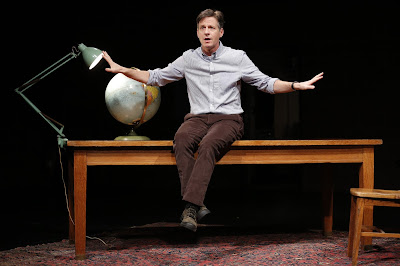Finding Humanity in Our Brokenness: An Interview with Martin Moran

By Simon Hodgson Growing up in 1970s Denver, teenager Martin Moran looked like a poster boy for Catholic school—a kid with good grades, clean fingernails, and a smile for everyone on his paper route. Inside, however, Moran was grappling with the conflicting shame and thrill of a relationship with his male 30-year-old camp counselor, Bob. “Sometimes I felt scared and I liked it,” Moran says in his memoir, The Tricky Part . “All the concealment was a kind of strange power. An entire and buzzing inner life. A fourteen-year-old boy on a three-speed Raleigh, getting it every which way. I was getting away with murder, with pleasure, with crimes, and I was pulling A’s.” Martin Moran in All the Rage . Photo by Joan Marcus. Moran went on to become a successful actor, with Broadway credits including Spamalot and Cabaret , and television appearances on The Newsroom and Law & Order . He is also a writer, whose OBIE Award–winning show The Tricky Part (based on his memoir) describes...






